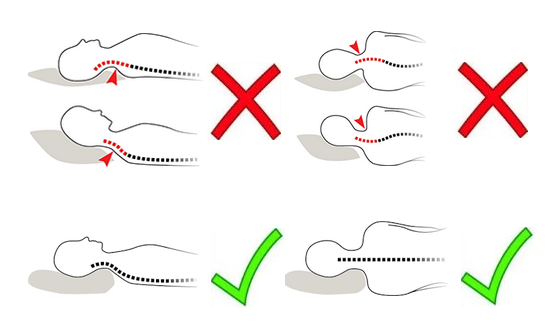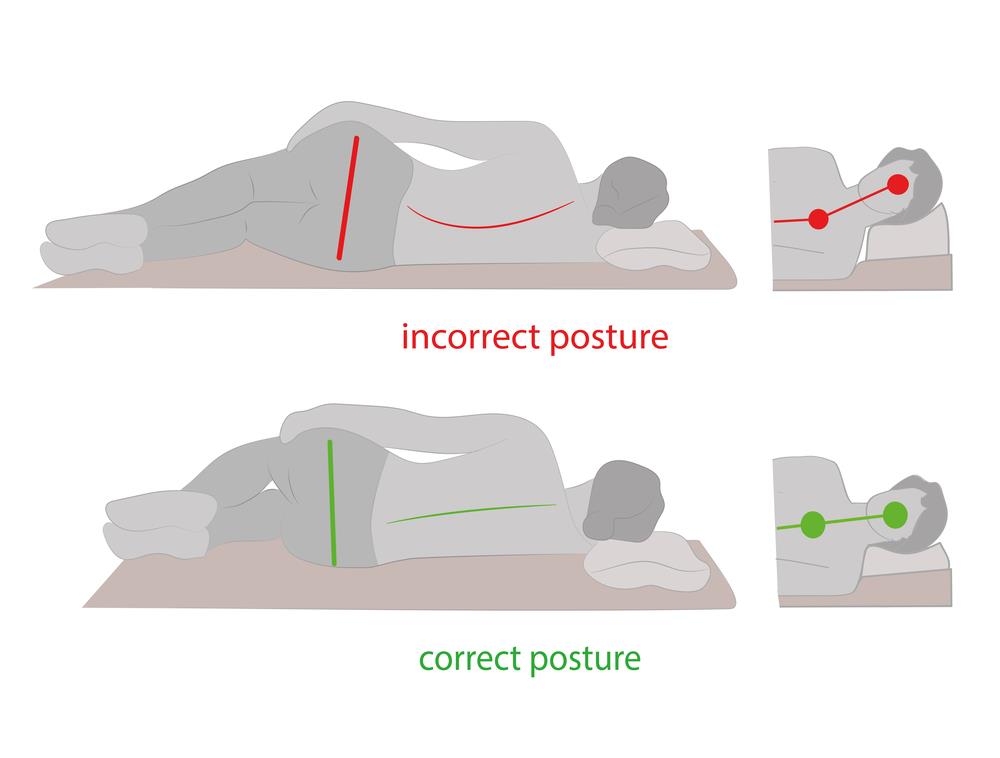Postural stress can make the difference between a restless night and sleeping soundly. From a smart-posture position to having the right pillow and mattress, tossing and turning reduces the restorative effects of sleep and can have significant health effects.
For your body:
- You’re 1/4 inch taller in the morning because relaxed sleeping removes spinal disc compression.(1)
For your brain:
- Research shows the space between the brain cells of mice increases with sleep to allow a flushing out of toxins that build up when awake.(2)
And for pain:
- Sleep disturbances can increase sensitivity to pain(3)
Design your sleep environment for comfort and support. Dark and quiet is better. Strive for a cool but comfortable temperature that lets you use a blanket. Avoid late-night meals, and late in the day naps and caffeine.
A regular workout routine improves sleep, but be aware that exercising has an energizing effect, so a late night run may keep you up later than you’d like. Many find a few yoga asanas a good evening ritual to calm and center yourself.
An end-of-day routine to unwind can include a shower or a cup of tea. With the possible exception of a book reader, avoid bringing electronics to bed. A bedside notepad lets you jot down any last minute to-dos… and forget about it. If your phone is nearby, put it on airplane mode.

PostureZone® guide to smart sleeping
HEAD
When it comes to pillows, one size does not fit all. Your preferred sleep position and unique body may require a few tries to get it right. Get help from a professional to pick the right pillow if neck pain after sleeping is a recurring issue.
Belly Sleeper
Avoid sleeping on your belly – this position forces you to turn your head to one side, making it harder to breathe and straining the neck. Also, sleeping on your stomach can cause hyperextension of the lumbar spine aggravating low back pain.
Back Sleeper
Keep head and spine aligned with a thin pillow. Consider one with a neck contour. Avoid thick pillows that force your head up, or your chin to your chest.
Side Sleeper
Choose a pillow that supports your head keeping it in line with your spine. A thin middle and lower lobe can give your neck more support.
TIP: Try turning your contour pillow upside-down for a more gradual change in support surfaces.
TORSO and PELVIS (aka “the core”)
Goldilocks was right… not too hard, not too soft. A supportive mattress makes a difference to keep the heaviest parts of your body aligned. Chiropractors and other health experts usually recommend a firmer sleep surface, but comfort is an individual preference.
Advances in bedding offer options for every body, which is why online mattress sale companies like 4Sleep are booming. Box springs are out and sleep foundations are in. Affordable high quality foam mattresses expand on delivery, and memory foam has advanced to include multiple layers and options like pressure point mapping and temperature-control gel.(4)
TIP: Look for how the bed supports you when you are sitting on the edge. Good edge support is a sign of a well constructed mattress.
LEGS
If you’re a side sleeper, put a pillow between your knees to add pelvic support and alleviate low back stress.

Take the time to design a sleep posture environment that fits your body.
How’s your posture? Call our office today to schedule your Posture Assessment.
May is Posture Month. Visit us on Facebook to see a new posture tip for each day in May!

